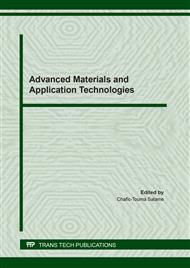p.177
p.183
p.189
p.203
p.213
p.228
p.241
p.256
p.273
Characterization of Thermal Inertia and Footprint Carbon of Clay-Wool, Clay-Cork, and Clay-Plastic Composites
Abstract:
Passive solutions in the concept of energy efficiency play an important role in reducing energy consumption, and emissions of CO2. However, controlling the parameters of walls, and roof thermal Inertia is the perfect way to ensure comfort inside houses. In this paper, an investigation of thermal inertia behavior, and energy efficiency of clay with natural, and industrial additives: cork, wool, and waste of plastic. The use of those materials will improve the comfort of the inhabitants of the cold area who suffer from the hard climatic conditions, not just the block’s clay will be extracted from the same area but also they will be sun backed, the thing which will reduce the huge energy consumption of brickyard. A study of the energy efficiency of those materials was done using TRNSYS, and an evaluation of their environmental impact was evaluated by calculating their emissions in terms of CO2. The results obtained indicate an important characteristic in term of thermal Inertia, for a value of thermal transmittance of U= 0.55 W.m-2.K-1, we need 0.9m thickness of wall using the heavy concrete, however, if we use clay, we gain 69 %, clay-plastic we gain 79 %, clay cork, we gain 87 %, and by clay-wool, we earn 89 % in term of the wall’s thickness. For the delay of the heat flow of a wall of 25 cm, we could assure a delay of above 11h instead of just 2h for the heavy concrete. Concerning the heating need during a year during the cold season, the clay presents a need for 1500 KJ.h-1. Concerning the footprint carbon, the composite clay-cork has a negative footprint carbon; however, the clay and clay-wool present a low carbon emission near zero when the clay-plastic and the heavy concrete present the highest value of emissions.
Info:
Periodical:
Pages:
213-227
Citation:
Online since:
May 2021
Price:
Сopyright:
© 2021 Trans Tech Publications Ltd. All Rights Reserved
Share:
Citation:


